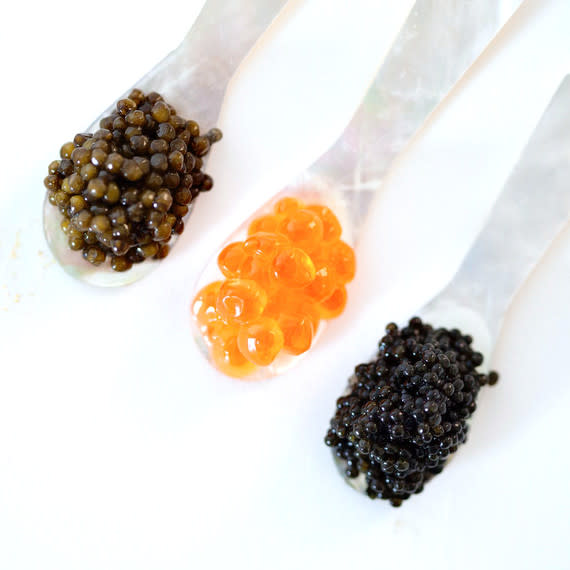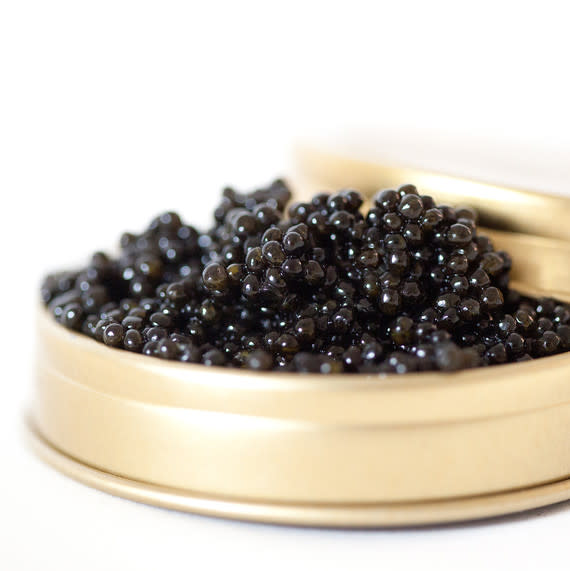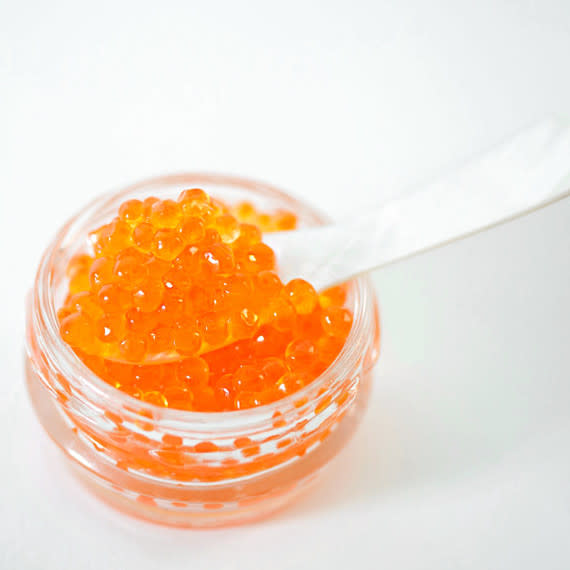Does Affordable Caviar Exist?

Caviar has long been considered an extravagance—and at $95 and up for an ounce, that's not surprising. The good news is that today there is a wider choice of caviar and other cured fish roe, making it's more accessible than ever. And guess what? It's also healthy. Caviar and roe are a great sources of omega 3 and vitamin B12 and also contain vitamins A, E, B6, iron, selenium, and magnesium, so there's even more reason to enjoy it.
By definition caviar is the cured roe from sturgeon. While you might associate caviar with the traditional beluga, osetra ,and sevruga varieties from the Caspian Sea that cost hundreds of dollars per kilo, the U.S. also produces caviar and in the early 1900s was the largest producer of caviar in the world. Today you'll see the term applied to lots of other fish roe, too. Because of past overfishing, much of today's caviar and roe production is from sustainably farm-raised fish.
No matter what your budget is, there's a caviar or roe for you. According to Petra Bergstein, founder of The Caviar Company, domestic caviar tends to be more price friendly, because as soon as you start importing, there are taxes, permits, and duties that increase the price. However, if you're looking for imported caviar, the most economical option she recommends is her company's top selling nutty and smooth Siberian sturgeon, starting at $95 per ounce.
Related: How to Buy, Store, and Shuck Oysters

American Caviar
High quality, entry level American white sturgeon can be found for around $80 per ounce. When buying white sturgeon Michael Passmore, founder of Passmore Ranch, a freshwater, sustainable fish ranch says, "Look for reasonably sized beads, darker in color, though some green mean more fattiness and more flavor." He also notes that caviar should not be overly wet, and it should not be floating in fluid. The best white sturgeon caviar should have creamy, buttery, and nutty notes. Passmore recommends buying caviar from somewhere you can try it whenever possible and always checking the dates on packages because freshness is paramount. Passmore Ranch Circle 41 white sturgeon has creamy rich pearls with golden green undertones.
For the least expensive caviar, Bergstein recommends hackleback (shown above), or paddlefish. They both come from wild American sturgeon. Hackleback is considered a good substitute for osetra caviar. It's black, with a nutty finish. Paddlefish is considered a less pricey substitute for sevruga caviar. It's gray in color, has a good pop, and a mineral finish.

Economical Options
Skip the sturgeon and consider cured roe instead for lower cost choices. Elliott Myer, the Executive Leader of Merchandising for Whole Foods Markets Global Seafood recommends whitefish and salmon roe as great value options. Available at Whole Foods are wild salmon roe with big juicy and salty orange beads and Echo Falls whitefish roe with a golden color and crisp pop. Another small roe is trout roe, with vivid orange hue, strong pop, and slightly sweet finish. Whole Foods and The Caviar Company require that all caviar and roe be both sustainable and traceable. Myer says you should always buy from a store where the staff can tell you where the roe came from and offer you detailed information. Also, avoid dyed capelin caviar; it will likely to bleed an unattractive green or blue when served.
Serving Tips
Whatever caviar or roe you buy, keep it cool, but let it sit at room temperature for 5-10 minutes before you serve it to allow for a stronger flavor. Use within a few days of opening the package and use a mother of pearl or even plastic spoon, never metal, which can interfere with the flavor and texture.

